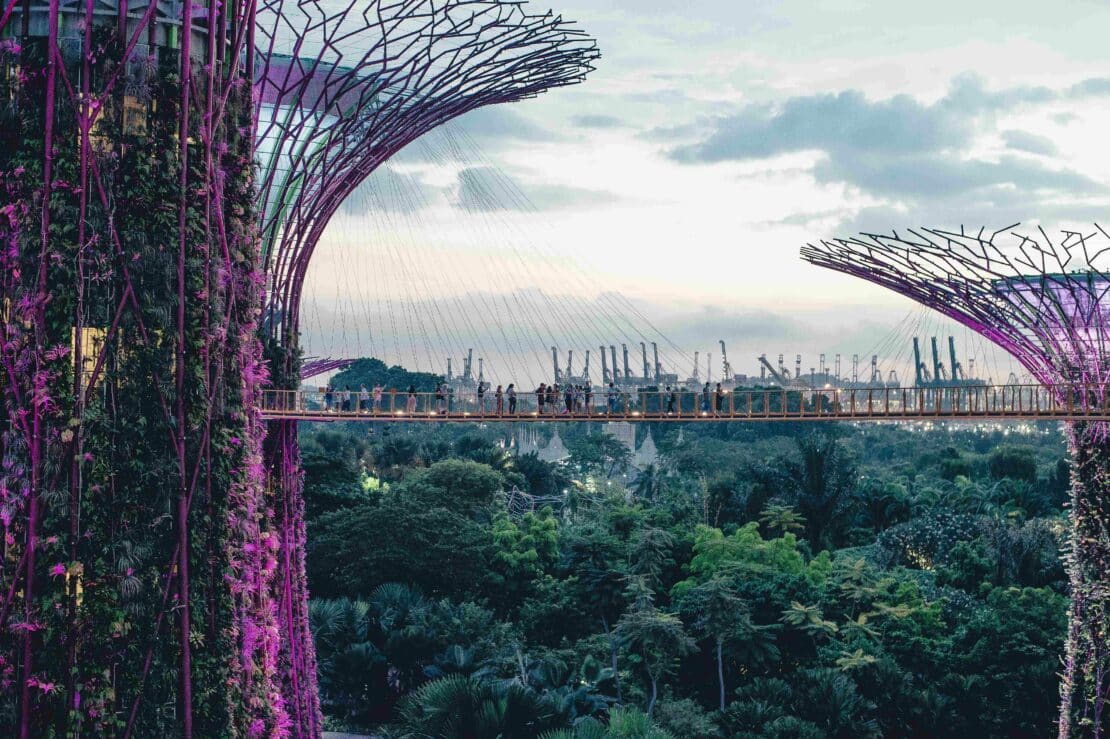HOW BIOMIMICRY FITS INTO THE CIRCULAR ECONOMY
The last few centuries have seen human society adopt a linear ‘take-make-throw away’ economic model, which works contrary to what nature does. So, the most obvious link between biomimicry and the circular economy is the recognition that in nature, there is no waste. Biomimicry offers a solution to this circular transition as it challenges us to rethink the way we produce, consume, and design our products in a manner that is within the planetary boundaries. By mimicking the closed-loop systems in nature, industry can be used as a force for good, one that brings economic, ecological as well as environmental value and eliminates the concept of waste to become regenerative in its own right.
Another learning that nature offers in the hopes to go circular is that we cannot achieve this alone. Just like the need for systems thinking from all different players of the circular economy, biomimicry too requires relevant stakeholders across multidisciplinary sectors to collaborate and innovate solutions together.
For example, in order to create solar cells that emulate leaves to increase energy efficiency and uptake, professionals such as engineers, product designers, and physicists have worked closely with ecologists and botanists, the experts in the morphology of leaves. Such collaboration has proven to be instrumental in making leaf-mimicking solar cells that generate 47% more electricity.
Biomimicry does not just mean design that ‘looks’ like nature, but rather carries the functionality that those organisms, processes, and systems possess that help them thrive. It ticks all three boxes of the circular economy principles in various ways:
DESIGNS OUT WASTE AND POLLUTION
As seen in nature, birds often fly in V-shaped structures. The reason is that when they flap their wings, they create an updraft of energy for the next bird in the structure, which helps that bird reduce the amount of energy they spend on flying. In the same way, researchers have found that if such a nature-inspired V-shape was to be followed by our airplanes, it could reduce the drag during the flight as well as reduce around 15% of the fuel consumption, thus providing a way for us to lower harmful engine emissions.
KEEPS MATERIALS AND RESOURCES IN USE
In nature, there is no waste. Everything is a nutrient or ‘resource’ that is recycled or reused infinitely. For example, corals release carbon dioxide as part of their metabolic process. Rather than wasting this CO2, the coral reabsorbs this carbon in a closed space just above its existing skeleton and uses it as a building material for its exoskeleton. Inspired by this process, builders and engineers are now looking into the possibility of absorbing carbon dioxide from our atmosphere to then develop building materials that can feed the construction and infrastructure industries. A perfect solution to reuse CO2 while reducing our greenhouse gas emissions.
REGENERATES NATURAL SYSTEMS
One of the best examples of using nature’s inspiration to recreate natural systems while also boosting growth, tourism, and development is the ‘Gardens by the Bay’ in Singapore. These gardens bring to life Singapore’s vision of becoming a global city that is a leader in environmental management and conservation. These structures consist of 18 ‘Supertrees’ that look like trees themselves while also assisting real trees to succeed. These trees consist of over 226,000 different plants including exotic species that create and restore the habitat for wildlife to thrive and survive right in the heart of the city. Besides their conservation benefits, the trees also have other features such as photovoltaic cells that absorb solar energy, and rainwater harvesting which removes the requirement for regular watering.
A WAY FORWARD
Biomimicry isn’t just a new technology or type of product. It is a problem-solving approach that looks to nature to provide solutions, focusing on systems that have proven to thrive and have the potential to transform the way our society operates. It is a collection of methods, old and new, that can guide humans towards more balanced consumption and production, through constant research and innovation.
As we move forward in our transition towards a circular economy, we must support innovations that both learn from nature and, in return, stand to benefit nature. Our cities need to be redesigned and transformed to operate as a natural living system. One that uses resources sparingly, constantly replenishes them, harvests rainwater, mitigates natural disasters, provides habitat for diverse species, recycles waste, thrives on clean energy, and sequesters carbon.

